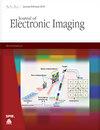SGTformer: improved Shifted Window Transformer network for white blood cell subtype classification
IF 1
4区 计算机科学
Q4 ENGINEERING, ELECTRICAL & ELECTRONIC
引用次数: 0
Abstract
White blood cells are a core component of the immune system, responsible for protecting the human body from foreign invaders and infectious diseases. A decrease in the white blood cell count can lead to weakened immune function, increasing the risk of infection and illness. However, determining the number of white blood cells usually requires the expertise and effort of radiologists. In recent years, with the development of image processing technology, biomedical systems have widely applied image processing techniques in disease diagnosis. We aim to classify the subtypes of white blood cells using image processing technology. To improve the ability to extract fine information during the feature extraction process, the spatial prior convolutional attention (SPCA) module is proposed. In addition, to enhance the connection between features at distant distances, the Shifted Window (Swin) Transformer network is used as the backbone for feature extraction. The SGTformer network for white blood cell subtype classification is proposed by combining recursive gate convolution and SPCA modules. Our method is validated on the white blood cell dataset, and the experimental results demonstrate an overall accuracy of 99.47% in white blood cell classification, surpassing existing mainstream classification algorithms. It is evident that this method can effectively accomplish the task of white blood cell classification and provide robust support for the health of the immune system.SGTformer:用于白细胞亚型分类的改进型移位窗变换器网络
白细胞是免疫系统的核心组成部分,负责保护人体免受外来入侵者和传染病的侵害。白细胞数量减少会导致免疫功能减弱,增加感染和患病的风险。然而,确定白细胞数量通常需要放射科医生的专业知识和努力。近年来,随着图像处理技术的发展,生物医学系统已将图像处理技术广泛应用于疾病诊断。我们的目标是利用图像处理技术对白细胞进行亚型分类。为了提高特征提取过程中提取精细信息的能力,我们提出了空间先验卷积注意(SPCA)模块。此外,为了增强远距离特征之间的联系,还使用了移位窗(Swin)变换器网络作为特征提取的骨干。通过结合递归门卷积和 SPCA 模块,提出了用于白细胞亚型分类的 SGTformer 网络。我们的方法在白细胞数据集上进行了验证,实验结果表明白细胞分类的总体准确率为 99.47%,超过了现有的主流分类算法。由此可见,该方法能有效完成白细胞分类任务,为免疫系统的健康提供强有力的支持。
本文章由计算机程序翻译,如有差异,请以英文原文为准。
求助全文
约1分钟内获得全文
求助全文
来源期刊

Journal of Electronic Imaging
工程技术-成像科学与照相技术
CiteScore
1.70
自引率
27.30%
发文量
341
审稿时长
4.0 months
期刊介绍:
The Journal of Electronic Imaging publishes peer-reviewed papers in all technology areas that make up the field of electronic imaging and are normally considered in the design, engineering, and applications of electronic imaging systems.
 求助内容:
求助内容: 应助结果提醒方式:
应助结果提醒方式:


